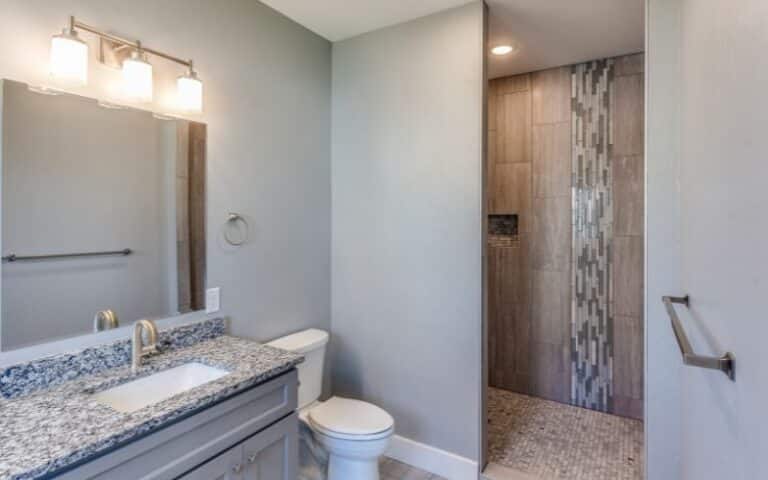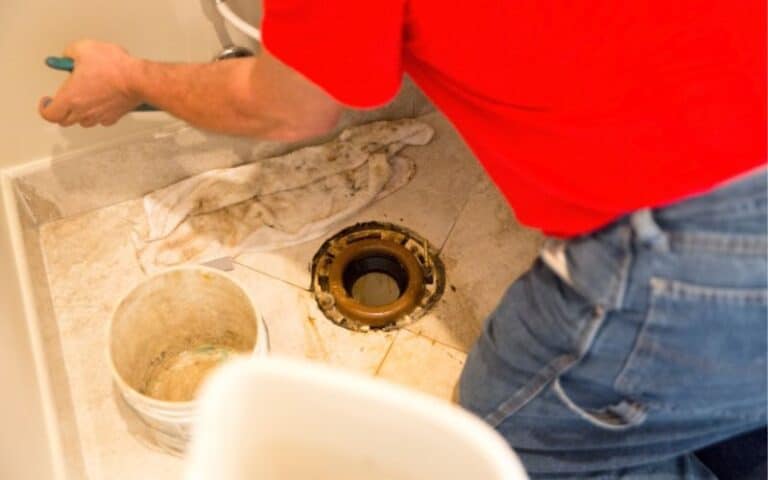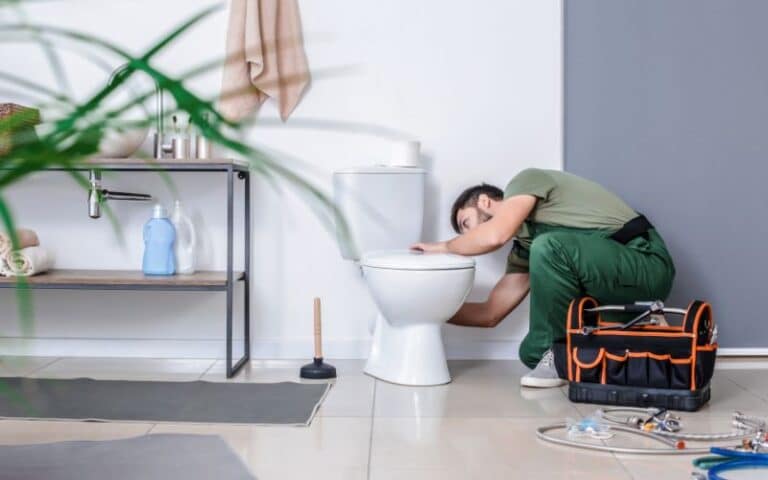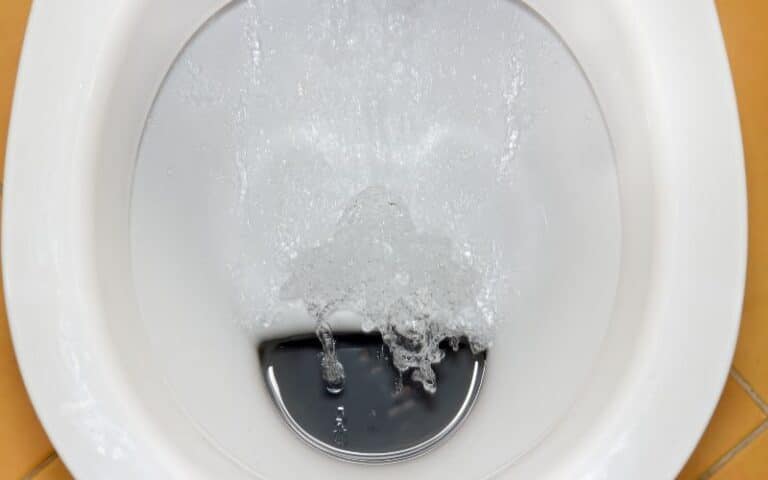You may experience difficulty selecting the right toilet for your home, this can happen whether you’re remodeling your bathroom or building a new one altogether.
There are several options, such as back-to-wall, wall-hung, and back-to-back toilets. Back-to-back toilets have recently become quite trendy, which may be a good place to start.
Back-to-back toilets refer to a pair of toilets with a single wall connecting them, usually with the same pipe or drain. The toilets are usually built such that the fluid, waste, and vent sources for the toilet are all on the same wall.
Back-to-back toilets are one of the many options you can choose if you’re looking for a suitable toilet for your bathroom. Or you’re fixing an old back-to-back toilet in your home.
If you decide to install back-to-back toilets, you will find all the information you need on installation and possible issues the toilet may have in this article.
Is It a Good Idea to Install Back-to-Back Toilets?
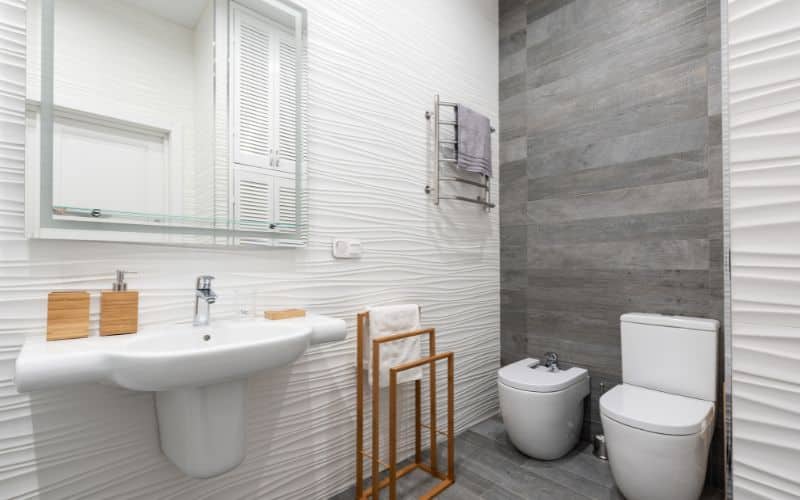
Installing a back-to-back toilet can effectively save space and reduce costs, among other advantages. Generally, a back-to-back toilet is a good choice for your bathroom.
Back-to-back toilets utilize pooled drains, which is usually an alternative to single vents; two toilets are connected to a single drain pipe which is then connected to a main sewage line.
One advantage of back-to-back toilets is that using one drain pipe during installation can save labor and reduce the supplies needed.
Back-to-back toilets can be a good idea if you want to save the area required for multiple drain pipes.
Saving space is especially useful if you would have used the area had you chosen to install another toilet.
A back-to-back toilet is a good option if you’re trying to save on space, expenses, or both. You can save money on supplies and construction using the same drain.
Also, two toilets will take up much less space, especially when installing separate drainages for each toilet.
Back-to-back toilets are good if you’re trying to reduce the quantity of water used in the bathroom. Water becomes more effective when you connect two bathrooms to one drain.
It is also easier to clean the toilet when two toilets are joined to the same drain; you also require fewer accessories and less plumbing equipment, making the restroom less cluttered.
The kind of toilet you choose depends largely on your choices and needs. But it would help if you went with a back-to-back toilet to save costs and water and reduce restroom clutter.
How to Install Back-to-Back Toilets?
You can plumb two toilets back to back, but before you do, there are some things you should do first. You have to make sure that the rough-in sizes are compatible.
In addition, the drainage and the back-to-back carrier systems also have to be compatible, and you need to ensure that there is proper ventilation to prevent unpleasant odors.
You also have to see to it that both toilets flush properly; this is important because if one toilet does not flush, it will affect the other toilet and make an unpleasant mess.
To install back-to-back toilets, you will need the following tools. Always gather all your tools and equipment before you start.
In this case, the tools you’ll need include;
- Two toilets (the rough-in sizes must be compatible).
- PVC pipes and fittings
- Back-to-back carrier fittings
- Closet bolts and nuts
- Pipe cutter or saw
- Wax rings or any other sealing material of your choice.
- Pipe primer and cement
- Adjustable wrench
- Screwdriver
When you’ve put all your tools in order, follow the steps below carefully to install your back-to-back toilet.
#1. Get the Area Ready
First, measure the floor, and mark your desired area for installing your toilets.
Follow the manufacturer’s instructions to properly install and secure the back-to-back carrier on the marked-out area.
#2. Install the Waste Pipe
First, take note of how far the carrier system is from the drain pipe so that you can accurately cut the waste pipe to the correct distance.
Then, the PVC fittings attach your waste pipe to its carrier system. Ensure the connection is watertight and secure before moving to the next step.
Use a Y-fitting to connect the opposite ends of each waste pipe to the main drain pipe and secure it as well.
#3. Install Closet Flanges
Next, use wax rings on all the closet flanges, position the flanges above your carrier system, and ensure they align properly with each rough-in position for your toilets.
Use the screws or the available fastener to secure the flanges according to the manufacturer’s specifications.
#4. Put the Toilets in Position
Take the first toilet and place it carefully above one of the flanges to align with the rough opening.
Then, press the toilet gently for the wax ring to seal properly. After that, insert the closet bolts into the flange shots.
Make sure to tighten the nuts moderately, without making them too tight, so you don’t damage them.
Take the second toilet and repeat the process, ensuring it aligns with the flange, just like the first toilet.
#5. Connect Your Water Supply
Put water supply lines in the fill valves of all the toilet tanks and check the connection thoroughly to ensure it is tight.
When you’ve checked the connection and tightened all loose lines, turn on the water to check the connection again for leaks.
#6. Test Your Work
Put water in the toilet tanks, flush both toilets, and pay attention to the drainage and flow to ensure they function properly.
You can make the needed modifications, like tightening or leveling.
Finally, you can fit the toilet seats and use some caulk to seal any gaps to achieve a more neat appearance.
Can Back-to-Back Toilets Share the Same Pipe?
Two toilets can share the same pipe if they are installed back to back. Back-to-back toilets can share the same pipe, but only if they’re on the same house ends.
If at opposite ends, they cannot share the same pipe. So, back-to-back toilets and side-by-side toilets can share the same pipes.
However, it is important to note that if the toilets are in opposite directions, they’ll require distinct drain lines.
In addition, ensure that the pipes are the right size to accommodate water flowing from the two toilets.
You will also need to make a few adjustments before you can install two toilets with the same drain.
- Your bathroom must be spacious enough to contain two toilets.
- You must ensure that the plumbing layout accommodates two toilets sharing the same pipe.
- You may have to make some adjustments, although this depends on your current plumbing, like relocating some pipes to avoid interference.
- Finally, you must ensure that your existing plumbing system fits your new toilet fixtures.
Can You Flush Back to Back Toilets Simultaneously?
You cannot flush back-to-back toilets simultaneously; both toilets are connected to a single drain pipe which is then connected to a main sewage line.
Ordinarily, there is a higher chance of blockages and clogging with back-to-back toilets, and simultaneously flushing the toilets can increase the chances of clogging and blockages.
Furthermore, it is easier for back-to-back toilets to become clogged as solid waste leaving one toilet can affect the drainage of the other or even enter the other toilet.
This issue will be worse if you flush both toilets at the same time. The waste will not drain; instead, it may empty into the other toilet.
Flushing both toilets simultaneously can cause water to overflow from the drain. Since both toilets share the same drain, it will put pressure on the drain and cause an overflow.
Finally, flushing back-to-back toilets simultaneously can put pressure on the pipes and cause them to develop leakages and eventually damage them. Leaky pipes can lead to flooding.
5 Common Problems With Back-to-Back Toilets
Installing back-to-back toilets can be a good way to save space and reduce costs, but back-to-back toilets can also have some disadvantages.
Some of the downsides associated with back-to-back toilets include;
#1. Clogging
Linking two toilets to a single drain can put a lot of pressure on the drain, so the drain will have to be big enough to fit both garbage streams coming from the two toilets.
But if the drain is not big enough or has limited drain ability, there may be blockage which will inevitably affect both toilets.
#2. Odor
When two toilets share the same drain, the potential for odor problems increases, and bad odor can make the bathroom and the entire house inhospitable.
When two toilets have the same drain, there is poor ventilation because the air cannot move away from the bathroom.
In that case, sewage gas seeps into the restrooms and causes an unbearable odor.
#3. Increasing Water Intake
While trying to save costs by installing back-to-back toilets, you may end up costing yourself even more in increased water bills.
Since both toilets will consume the same amount of water, linking them to identical drains will increase the water consumed, and the water bill will increase.
#4. Leaky Pipes
Some pipes link both toilets to a single drain; such pipes may get loose or broken over time. And if that happens, it can cause flooding and severe problems for the home.
#5. Wastewater Overflow
Since both toilets share the same drain, water can overflow from the drain and make a mess. Also, the overflow can spread germs and toxins, making this a health hazard.
Although back-to-back toilets have their drawbacks, some advantages come with installing them.
| Advantages of Back-to-Back Toilets | Common Problems With Back-to-Back Toilets |
|---|---|
| Installing back to back toilet reduces expenses | Clogging |
| Back-to-back toilets save space | Increased water intake |
| Water is more efficient | Overflow of wastewater |
| There is less clutter in the bathroom | Unpleasant odors due to poor ventilation |
| Back-to-back toilets are easier to clean and maintain | Poor ventilation |


